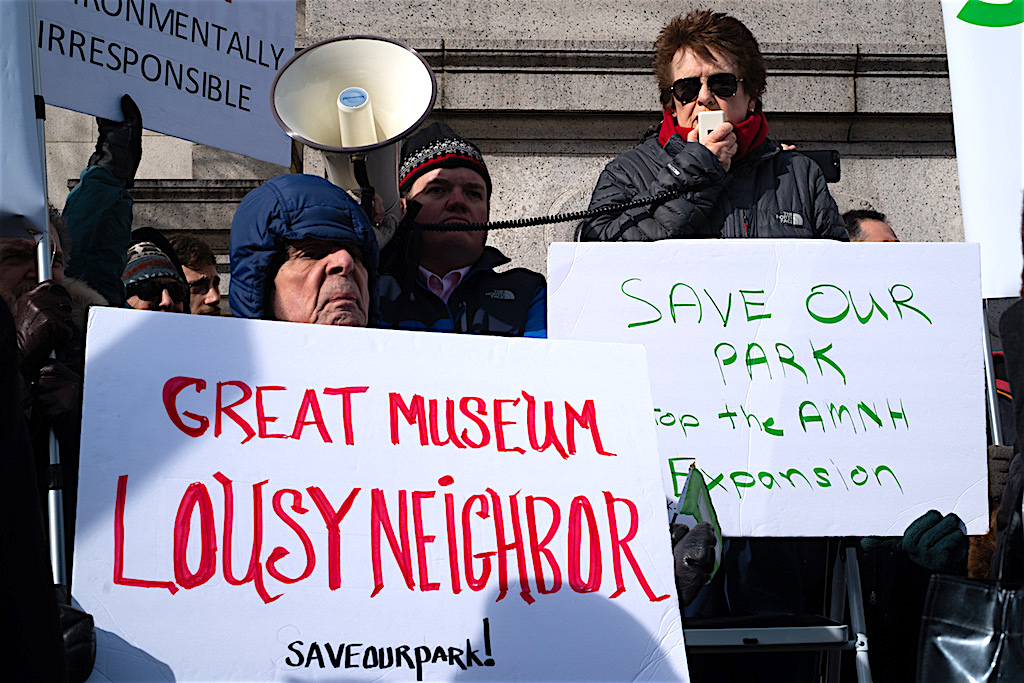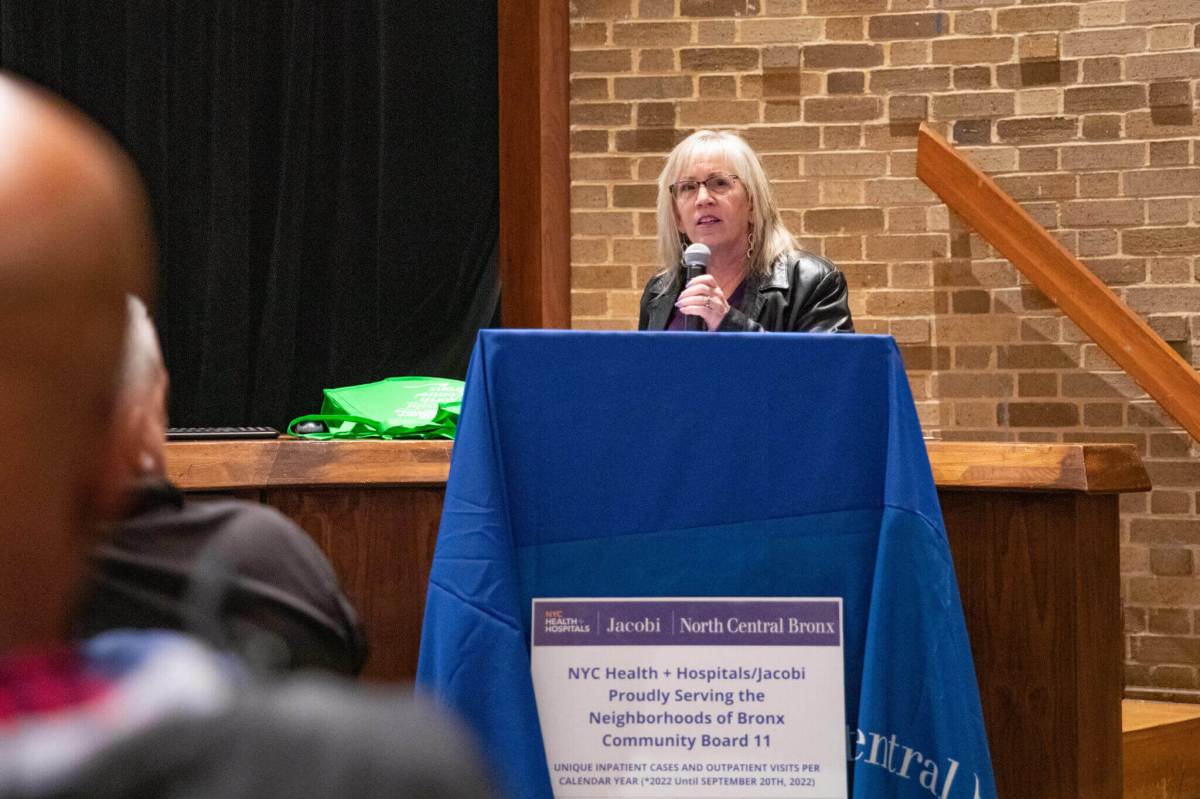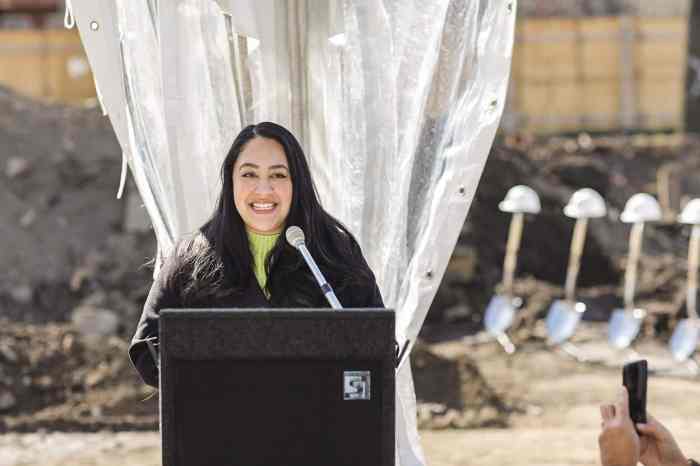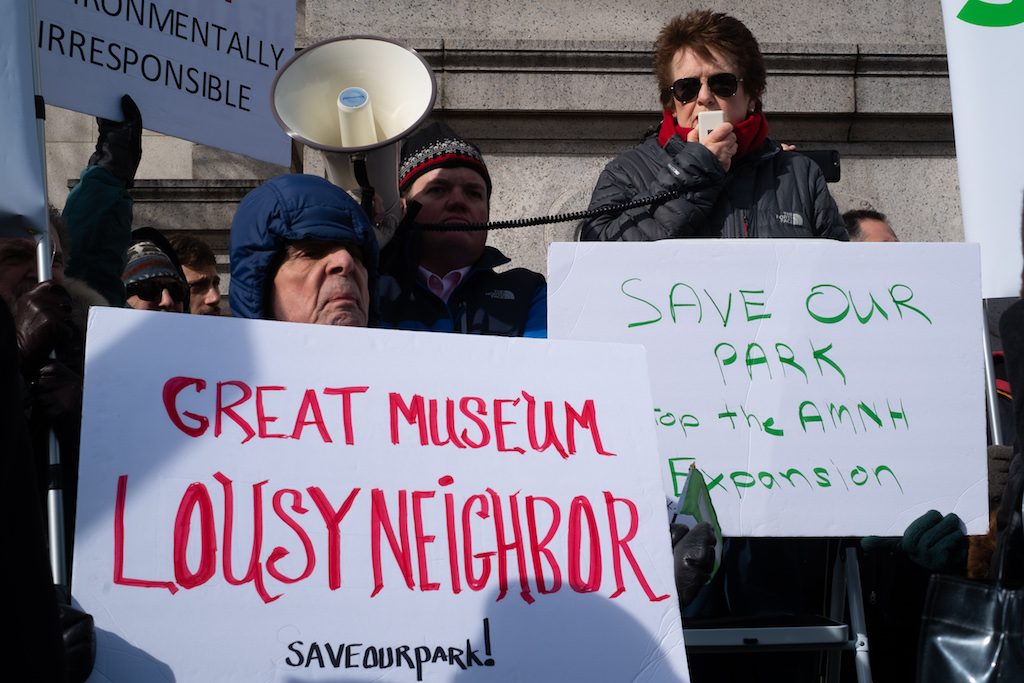
BY ALEJANDRA O’CONNELL-DOMENECH | Tennis great Billie Jean King and fellow protesters volleyed barbs at the American Museum of Natural History last Saturday over the Upper West Side institution’s planned expansion in Theodore Roosevelt Park.
The demonstrators rallied on the museum’s steps on Central Park West at the Feb. 2 action.
The legal challenge against the museum expansion is currently in the appeal process. A decision on the appeal is expected in the spring.
“Preserving our public parks, especially here in New York, is vitally important,” King told the rally. The tennis icon lives nearby.
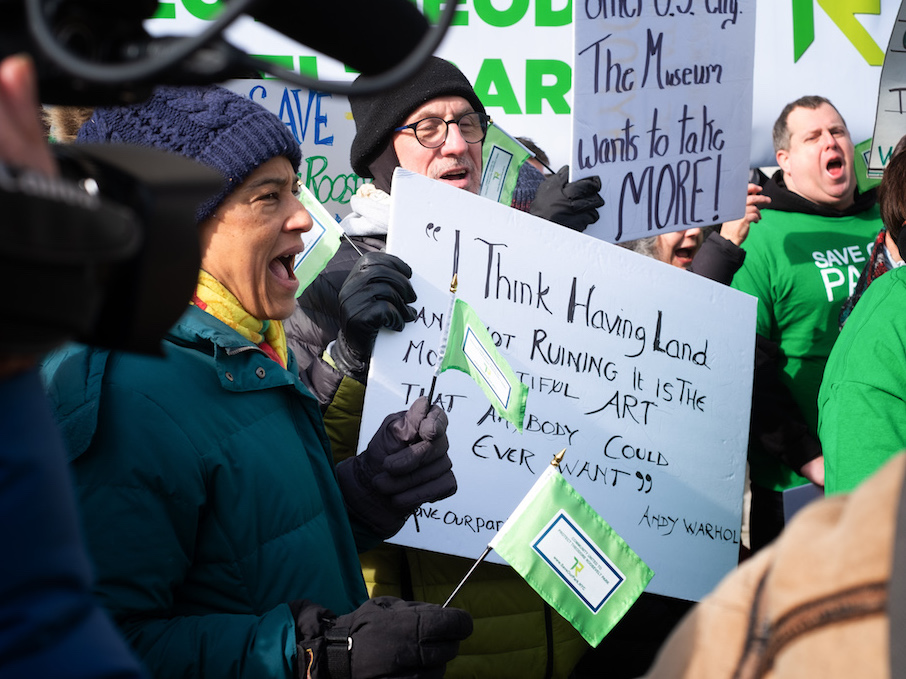
The protesters said developers — and museums that want to grow — have no right to take away the precious scant green space available to New Yorkers. According to one protester, if the museum needs more space, “it should build up,” not out.
“We need the city government to abide by the promise — reflected on the placards at the entrances of the park — that this is a shared recreational space to be available to both the general public and museum visitors,” King said.
The museum’s expansion plan, which has been in the works since 2014, would see it take nearly a quarter-acre of the 17.58-acre Upper West Side park in order to construct the Richard Gilder Center for Science, Education and Innovation. The $383 million center would be a place of public exhibitions and an active scientific and educational institution, according to the museum’s Web site.
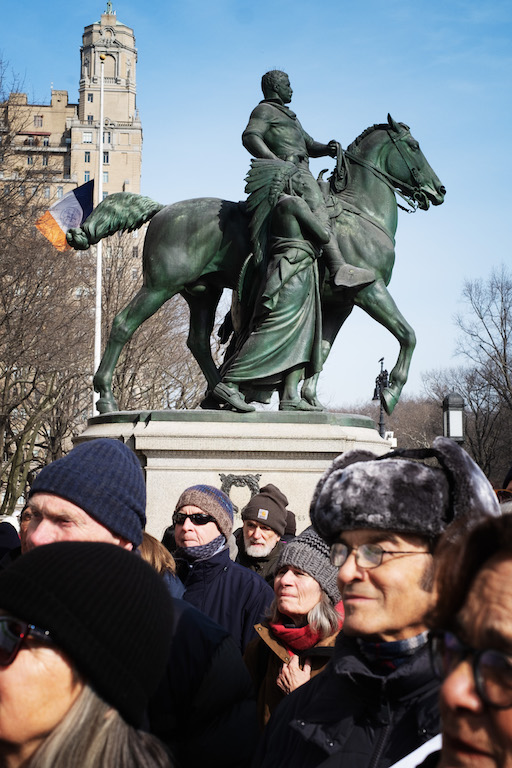
The turf war pits a small neighborhood-based nonprofit versus the museum, one of the city’s major cultural institutions.
Last March, Community United to Protect Theodore Roosevelt Park filed a lawsuit against the museum, arguing that construction on the new center would negatively impact the park. More recently, the group scored a victory when a judge put a temporary restraining order on the project, blocking construction on it.
But on Dec. 10, the museum was given a green light to begin construction after the restraining order was lifted.
Just a week later, though, Justice Judith Gische, of the Appellate Division of New York Supreme Court, granted a “stay pending appeal,” in response to a request by Michael Hiller, the attorney representing C.U.P.T.R.P.
According to a museum representative, the Appellate Court dropped the “stay pending appeal,” meaning that construction on the Gilder Center can theoretically begin.
But to the members of C.U.P.T.R.P., this is about more than just an acre of land.
According to attorney Hiller, the museum’s proposed “land grab” violates New York law.
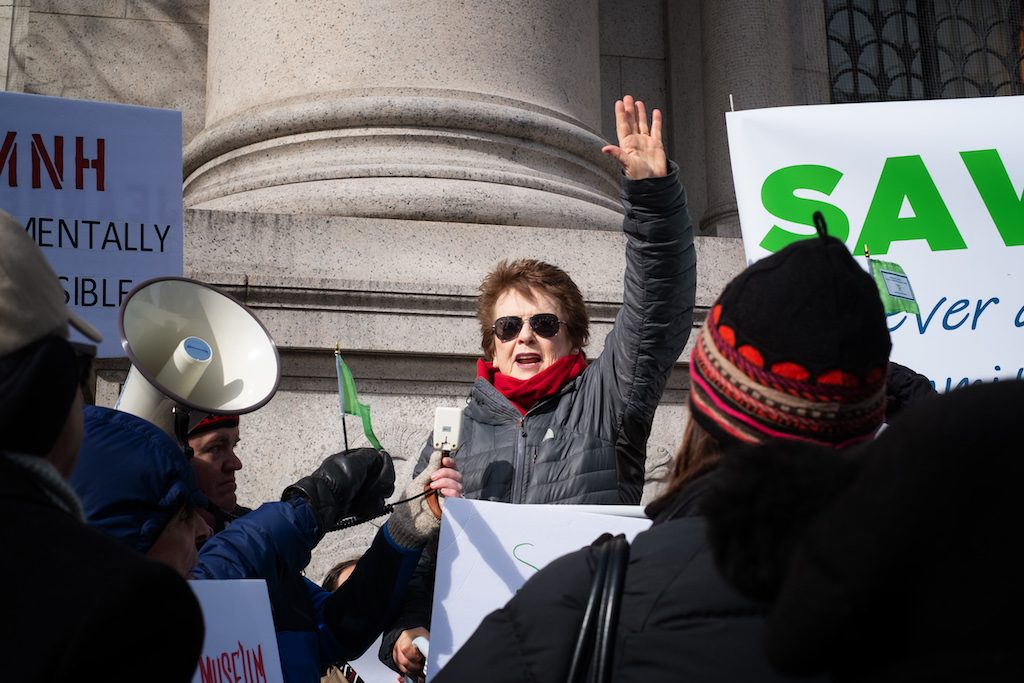
In 1807 the space was dedicated as a public park. In 1876 the New York State Legislature passed a law allowing New York City to enter into a lease agreement with the museum, renting the latter a portion of the park for a new facility.
Over the next several years, the museum expanded. But for each new building, the museum asked for and obtained special permission from the Legislature.
However, for this new proposed expansion, the museum did not go through this process, according to a press release from the nonprofit.
“Under the [New York City] Charter, any time the city gives away or sells public land, especially parkland, and no state approval has been obtained, the city must submit to an administrative process known as the Uniform Land Use Review Procedure or ULURP,” Hiller said in a statement.
“When the city gave the museum permission to expand into the park without going through ULURP, the city broke the law — period,” Hiller stressed.

Besides the museum’s allegedly flouting the law and the threat of losing public green space, the protesters were also concerned about the disruption the resulting construction would produce, the strain the new facility would put on nearby subway stations, and the erosion of history.
“They don’t need to build out and capture the green space, disrupt the soil, disrupt the toxins in the ground, and, in particular, chop down these beautiful old, historic trees,” said Monica Boll, an Upper West Sider at the rally. “You cannot just go buy a whole new set and replant them once the expansion is done,” she said of the park’s magnificent old trees.
But a representative, referring to the Dec. 10, 2018, ruling in the museum’s favor, said the American Museum of Natural History is confident it will win the case — and that the new center will be a positive addition for the museum and the city, in general.
“In the lawsuit brought to stop the Gilder Center, by many of the same individuals that demonstrated on Saturday, the New York State Supreme Court ruled decisively in favor of the museum, finding that it had followed all the appropriate procedures and obtained all the required approvals,” the spokesperson said.
“The inherent value of this project is reflected in the broad public support it has received from numerous elected officials, neighborhood groups and advocacy organizations. We have every expectation that the Appellate Court will affirm the [State] Supreme Court decision.”



